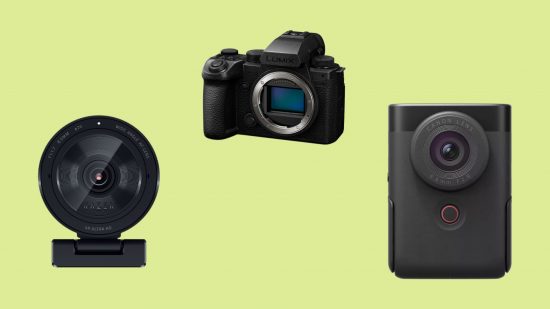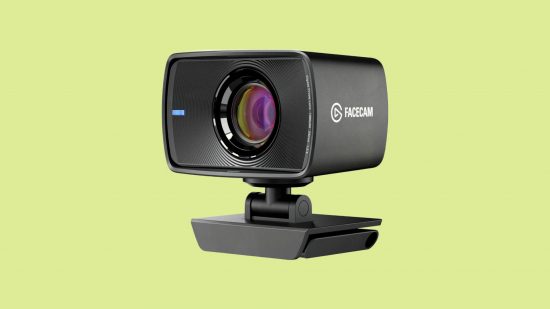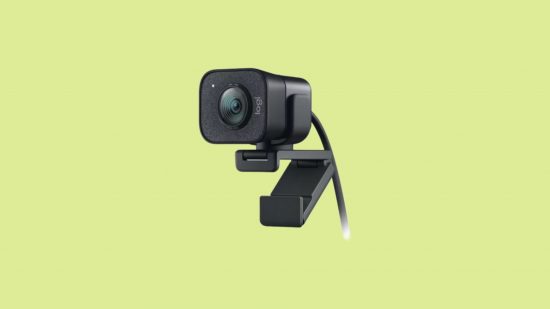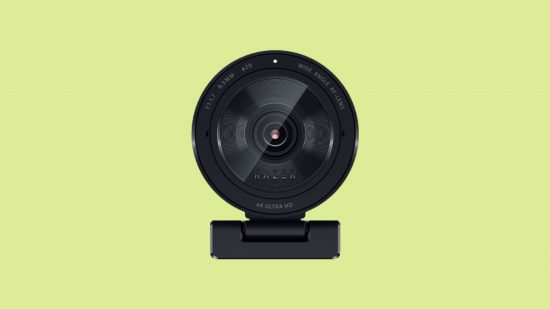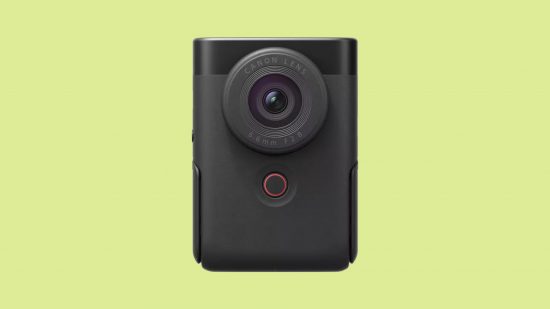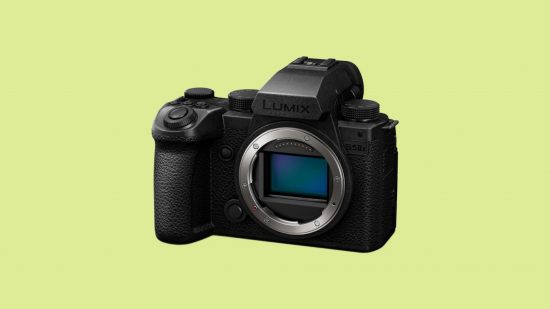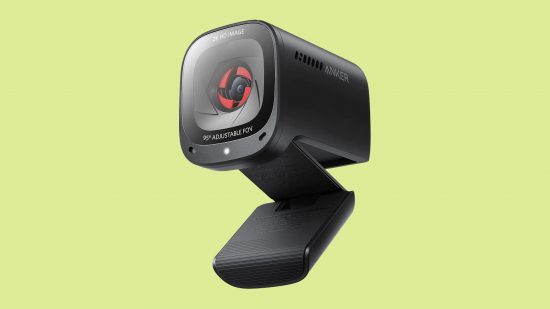Want to know what the best streaming camera is? You’ve come to the right place. Picking the best camera for streaming isn’t an easy process, there’s a number of things to consider.
Are you strictly looking for a camera that can stream while you game? Or do you need something that’s also suitable for presentations, meetings or using away from your desk setup? Most laptops have built-in cameras, so if you have a laptop, why not just stick with that?
Like the best webcams for streaming, you can also use dedicated cameras to stream and record online, and these are typically higher quality than built-in units that come with computers. Some also have additional features, such as integrated microphones, higher resolution or frame rates, and better dynamic range. Some cameras even have lights built into them. It’s handy to have a single product that can also serve as lighting for streaming as well as a streaming microphone too.
There are some key ingredients to building a following online and having a great camera is definitely up there in terms of priorities. We’ve selected a range of cameras at different price points and with different benefits to suit varying needs. After reading this guide, you’ll have found the best camera for your streaming needs.
The best streaming cameras for 2023 are:
- Elgato FaceCam – best overall
- Logitech StreamCam – best for all lighting
- Razer Kiyo Pro Ultra – most features
- Canon Powershot V10 – best for streaming and vlogging
- Lumix S5 IIX – best for advanced creators
- Anker C200 2K – best budget streaming camera
1. Elgato Facecam
The best streaming camera for most people.
Elgato Facecam specs:
| Resolution | 1080p |
| Framerate | Up to 60fps |
| Connection | USB-C 3.0 |
| Field of view | 82° |
| Dimensions | 78.7 x 58.4 x 48.2mm |
| Weight | 96.3g |
Pros
- Handles low light well
- Flexible stand design
- Smooth frame rates
Cons
- No 4K resolution
- No built-in mic
The first thing that may strike you about the Facecam is its size, it’s one of the larger cameras in its class. However, it’s not big for the sake of it. The Facecam features the powerful Sony STRAVIS CMOS sensor, one of the best units available in this category. It also benefits from a quality 24mm F2.4 lens, providing a wide 82° field of view.
One of the best things about the FaceCam is that it will deliver superb image quality with low noise, in a range of lighting conditions, including simpler setups with moody lighting. It offers both manual and automatic control, but if you don’t want to dial in your own settings, the Facecam can deploy dynamic image processing to analyze the feed from the camera and automatically make highlight and shadow corrections, giving you a balanced video stream that retains detail and color vibrancy.
If you decide to take advantage of Elgato’s software suite to make changes to your settings, the Facecam stores your adjustments onboard, meaning that you don’t have to keep tweaking the settings when you connect it to a different device. You can instantly recall your preferred parameters on any computer you connect it to.
If you’re interested in a versatile camera that prioritizes image quality and low latency performance, the Elgato Facecam is a very strong contender.
Read our Elgato Facecam review.
2. Logitech StreamCam
The best camera for streaming in any lighting conditions.
Logitech StreamCam specs:
| Resoluion | 1080p |
| Framerate | Up to 60fps |
| Connection | USB-C 3.1 |
| Field of view | 78° |
| Dimensions | 66 x 58 x 48mm |
| Weight | 222g |
Pros
- Smart autofocus
- Dynamic exposure
- Dual front-facing microphones
Cons
- No 4K
- Can’t adjust FoV
- Limited settings
It’s no surprise that Logitech’s StreamCam is aimed squarely at creators who love to stream. It’s all in the name. But it’s also in the feature set. The StreamCam is a super simple webcam solution that will deliver smooth 1080p footage at up to 60fps, but not much else. It’s designed to plug and play, with little room for making adjustments to the setting.
However, that does also mean that it comes with a decent dual front-facing microphone built-in, which is a nice extra that’s often missing on web cameras. The free-to-download Logitech Capture app extends the functionality of the StreamCam, allowing you to add text overlays, borders, filters, and other effects.
It also allows you to capture and edit your streams while feeding them through popular platforms such as Stream Labs, YouTube, TikTok and OBS. Additionally, due to its cubic design and u-bracket it can be rotated quickly for streaming to vertical platforms, a nice touch.
It lacks some features we’d have liked to see, such as variable field of view and more granular control over exposure settings. But it’s a neat package overall if you want a no-nonsense streaming camera that looks good and solves your camera and audio needs in one product.
3. Razer Kiyo Pro Ultra
The streaming camera with the most features.
Razer Kiyo Pro Ultra specs:
| Resolution | 1080p |
| Framerate | Up to 60fps |
| Connection | USB-C 3.0 |
| Field of view | 78° |
| Dimensions | 66 x 58 x 48mm |
| Weight | 222g |
Pros
- 4K/30p
- Noise handling
- Privacy shutter
- Omnidirectional microphone
Cons
- No obvious cons
Razer has gone all out (almost) to make the ultimate webcam. Offering many bells and a number of whistles, the Kiyo Pro Ultra offers one of the broadest combinations of frame rates and resolutions to be found on any webcam. Streaming resolution tops out at 4K at 30fps, some may have wanted to see smoother 60fps enabled here. If you want 60fps, you’ll have to stream in trusty 1080p, which also offers frame rates of 30/24fps.
The Razer Kiyo Pro Ultra also uses the large 1/1.2-inch Sony Starvis CMOS sensor, which is excellent in low light. But to further combat irritating image noise, this camera also offers 3D noise reduction via the Razer Synapse app.
4. Canon PowerShot V10
The best streaming and vlogging camera.
Canon Powershot V10 specs:
| Resolution | 4K |
| Framerate | Up to 30fps |
| Connection | USB-C and micro-HDMI |
| Field of view | 97.5° |
| Dimensions | 63.4 x 90 x 34.3mm |
| Weight | 211g |
Pros
- Unique lightweight design
- Simple operation
- AutoND feature
- Stereo Mics
Cons
- No optical image stabilization
- Battery non-removable
- Limited frame rates
If you’re not all in on streaming and want a versatile option that would be suitable for vlogging as well, the Canon PowerShot V10 is worth a look. It sports a unique design that’s very similar to body-worn cameras, but its form is functional. The V10 has a sturdy built-in stand and flip-up screen that makes it easy to set up and hold to capture your content in practically any scenario, without the need for a tripod.
It can be used as a stills camera for 15.2MP images, will record video at up to 4K/30p, and supports universal plug-and-play protocols so that it can operate as a webcam. You can also livestream, which is set up through Canon’s app, but streaming is limited to FullHD/30p quality.
5. Panasonic Lumix S5IIX (Body Only)
Best streaming camera for advanced creators.
Panasonic Lumix S5IIX (Body Only) specs:
| Resolution | 6K/30p |
| Framerate | Various available |
| Connections | Full-Size HDMI, USB-C, wired and wireless streaming |
| Field of view | L-mount compatible for interchangeable lenses |
| Dimensions | 102.3 x 134.3 x 90.1mm |
| Weight | 740g |
Pros
- Designed for professional use
- Offers 6k resolution
Cons
- Will exceed the needs of most streamers
- Expensive
This was a wildcard inclusion for our best streaming cameras buying guide, as for many of you, it will be overkill. However, if you’re a creator who is already experienced with streaming, photography, and video and want a true workhorse that can confidently do it all, the Panasonic Lumix S5IIX may be the camera for you.
Designed for professional video and photography, the Lumix S5IIX is an interchangeable lens camera, giving you plenty of options when it comes to focal length. It can capture video up to 6K resolution at 30fps, as well as 4K/60 and FullHD/120p. And when it comes to streaming, the S5IIX can stream wired and wirelessly. With a wireless connection, it can stream up to FHD/60p, this is increased to 4K/30p when tethered via USB-C and 4K/60p when connected via Wired LAN.
For photography, it can capture 25.2MP images and has fast phase detection AF, as well as a host of other features that make it a perfect camera for capturing your product shots as well as being a great streaming camera. It’s in a different league compared to other cameras mentioned in every way, including price point, so if you are interested, it’s worth noting how much more of an investment this camera is over the other options presented.
6. Anker C200 2K
The best streaming camera for those on a budget.
Anker C200 2K specs:
| Resolution | 2K |
| Framerate | Up to 30fps |
| Connection | USB-A 2.0 |
| Field of view | Up to 95° |
| Dimensions | 50 x 40 x 55mm |
| Weight | 198g |
Pros:
- Unparalleled picture quality for the price
- Wide FoV to show off your setup with
- Crisp image at 2K
- AI noise cancellation works a treat
- Privacy shutter
Cons:
- Can’t be manually focused
- Microphone won’t win any awards
Most would expect the Logitech C920 to slot seamlessly into the best budget streaming camera category, and for many years this has certainly been the case. For $60, you’re hard-pressed to find anything better than Logi’s go-to cam for new streamers, but Anker has found a way to upset the status quo with the PowerConf C200 2K.
Also coming in at $60, the C200 packs a larger 5MP sensor than the 3MP on the Logi, a much wider FoV – this stretches up to 95° depending on how you set it in the very respectable AnkerWork software – and can output at twice the resolution (2K vs 1080p) the C920 can.
From our testing, the C200 handles colors and contrast far better than the C920, and requires relatively little tweaking to get the best picture possible. With that said, Logi’s firmware is still the more consistent of the two, as we’ve seen reports from some users that certain firmware updates have caused their C200s to lose its ability to autofocus properly.
How we chose the best cameras for streaming
Each camera included in this list was chosen based on years of hands-on experience, and a deep understanding of the needs of streamers. We included the Elgato Facecam as our top recommendation because it offers decent picture quality and comes at a fairly reasonable price – of course, you can pay more if you’re keen to get that 4K resolution, or would prefer something with a built-in microphone.
Our other selections cover every other need we could imagine. We know that some streamers will be perfectly satisfied with a webcam – in part because they carry a lower price tag. While others will prefer a general camera which they might use for filming other types of content for their Twitch or YouTube channel.
Meanwhile, we’ve included a few that come with a built-in microphone. This will be just fine for some, but it has to be said that you’ll get better clarity of audio if you buy an individual microphone separately.
The streaming landscape is filled with audio and visual quality that’s a little lower than you’ll find from creators making videos on YouTube, for example. Streams are live, and viewers don’t expect things to be perfect (that’s part of the appeal), but we also understand that many budding streamers will be keen to have everything looking and sounding as good as possible.
Of course, beyond these factors, we stuck to the big, well-known manufacturers. When shopping for yourself, it’s much safer to go for the likes of Elgato, Razer, or Canon, than to risk it with an unknown brand.
Read our how we test page to find out more about how we put these lists together. If you have any other questions, read our FAQs below:
What camera do gamers use for streaming?
There’s not one definitive answer to that question. If you have say, ten favorite streamers, chances are that they’ll have ten different cameras. Having said that, there’s a pretty high probability that they’ll be using brands like Razer or Elgato. If you’re just starting out, we recommend that you go for a more entry-level model like the Elgato FaceCam or the Logitech StreamCam. If you enjoy it and things go well, you can upgrade later on.
How do I stream 4K on PS4?
You can only stream in 4K if you have a PS4 Pro. In order to ensure that you’re streaming with the highest possible quality from Sony’s last-gen console, you will need to go into the settings. After that, follow these steps:
- Click ‘Sound and Screen’
- Go to ‘Video Output Settings’
- Go to ‘Resolution’
- Set it to 2160P – YUV420 or 2160p- RG
With that done, you will now be able to stream in 4K.
For more on streaming to Twitch and YouTube from PlayStation or Xbox, read our primer.
What does a camera need for streaming?
At a base level, all you need to use a camera for streaming is an HDMI port/output to attach the HDMI cable. Of course, there are many other features that streamers might want e.g. a built-in microphone, adjustable stands, etc. but if you just want something simple to get started, that’s all you’re going to need.
Should I use a webcam or camera for streaming?
If you use a regular camera, you’ll get higher-quality pictures and sound than you will with a webcam. Having said that, it will also cost significantly more than a webcam, so it’s about weighing your priorities.
It’s worth keeping in mind that, depending on how you choose to present your streams, the chances are that the feed from your camera itself will probably be quite small, with the feed from your games taking up most of the space. Because of this, your audience won’t really be able to appreciate extremely high resolutions – although, we know that some streamers do have more focus on their camera feed than others.
We reckon that most streamers will be served just fine by a webcam, but we recommend upgrading to a regular camera down the line. It’s much more of an investment, so it’s worth waiting until your streaming channel takes off.
Is it okay to stream without a camera?
Some streamers choose to use only a microphone while they stream, offering commentary on the game they are playing. Others don’t even do that, and instead stream only the footage of their game session.
How you choose to do your streams is entirely your own decision. However, it’s important to keep in mind that the most successful streamers are those who film themselves with a camera because viewers like to get a look at a streamer’s personality.
For more streaming advice, read our list of the best streaming software, the best streaming setup for beginners, and the best stream deck options. You’ll be raking in those Twitch subscribers in no time.
